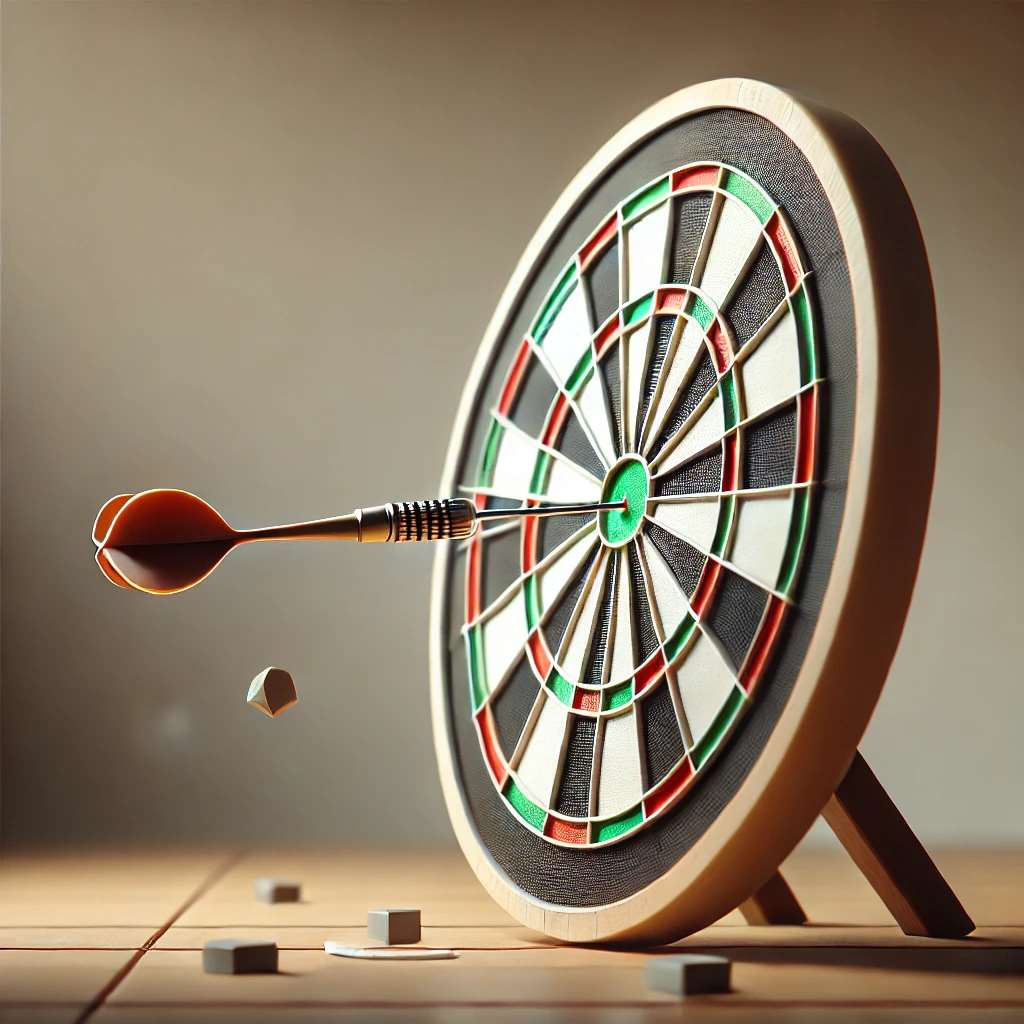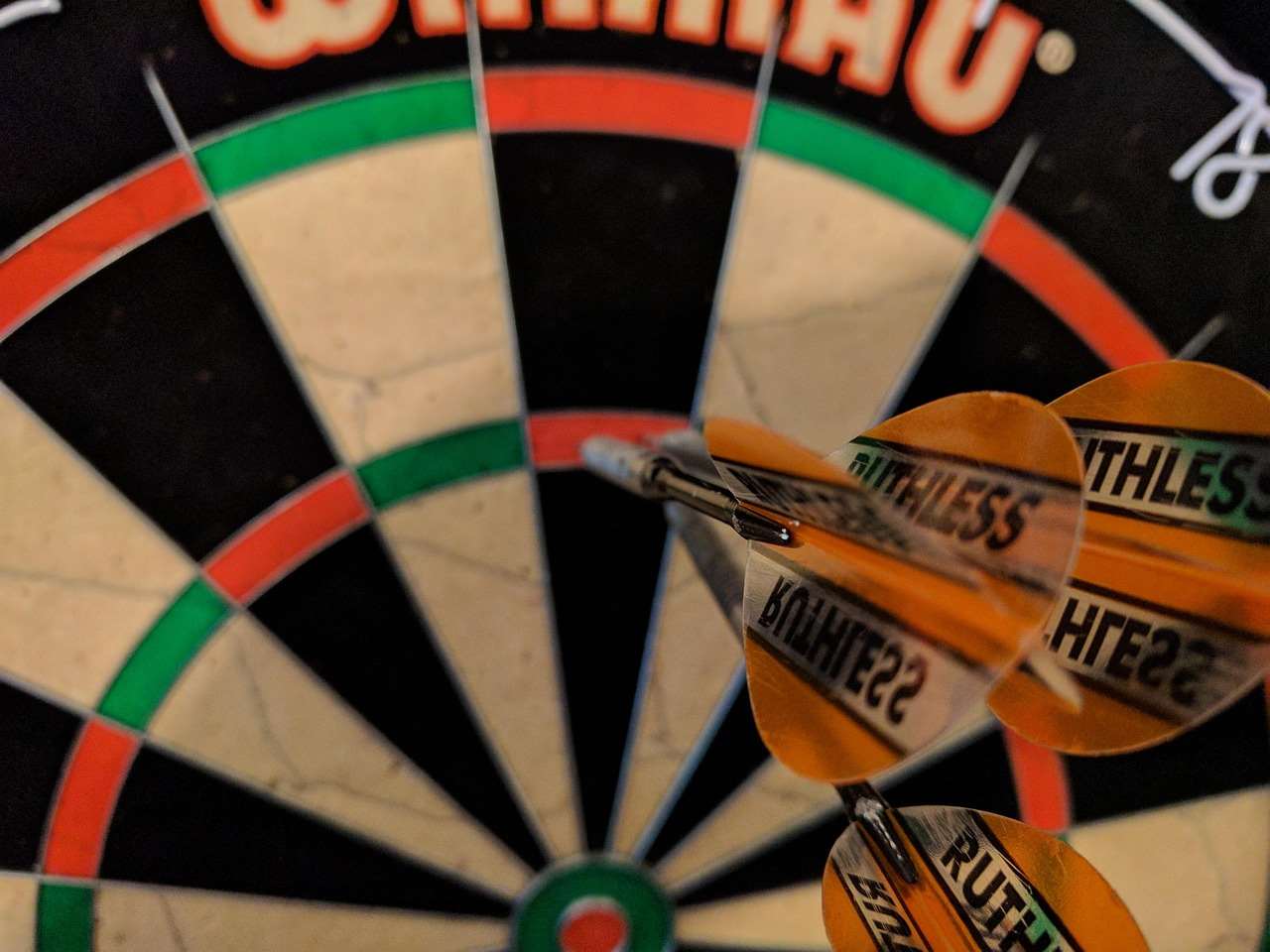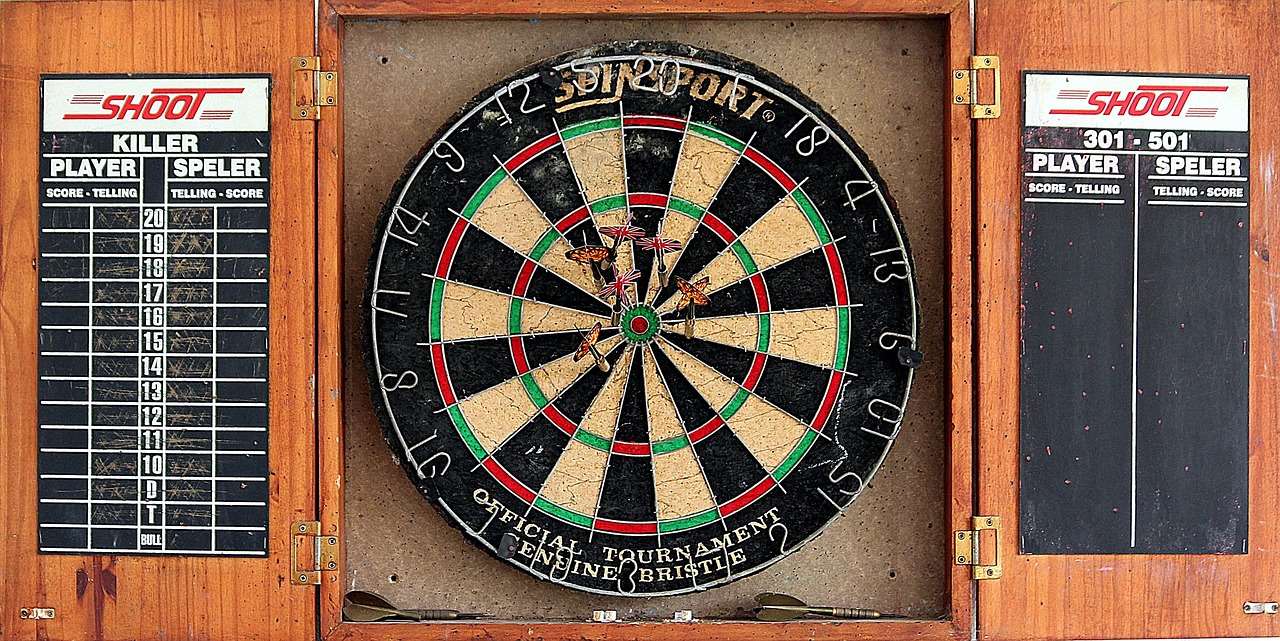Achieving a 180 in darts, the highest possible score with three darts, is the ultimate goal for many players. This article will explore the strategies, techniques, and mental fortitude required to consistently hit that coveted maximum, while also diving into the history and significance of this impressive feat. We’ll cover everything from stance and grip to mental preparation, helping you elevate your game and chase your own 180.
⚠️ Still Using Pen & Paper (or a Chalkboard)?! ⚠️
Step into the future! The Dart Counter App handles all the scoring, suggests checkouts, and tracks your stats automatically. It's easier than you think!
Try the Smart Dart Counter App FREE!Ready for an upgrade? Click above!
The Allure of the 180 in Darts
The 180 in darts is more than just a number; it’s a symbol of skill, precision, and focus. The roar of the crowd, the satisfying thud of three darts landing perfectly in the triple 20, and the feeling of accomplishment are what drive players to relentlessly practice and refine their game. It’s the equivalent of a home run in baseball or a hole-in-one in golf – a moment of pure sporting brilliance.
But what makes hitting a 180 in darts so difficult? It requires not only physical accuracy but also mental toughness. Under pressure, maintaining form and consistency can be incredibly challenging. That’s why seeing a player confidently step up to the oche and deliver a maximum is such a spectacle.

Techniques for Achieving a 180 in Darts
While there’s no magic formula, mastering certain techniques can significantly increase your chances of hitting a 180 in darts. These include perfecting your stance, grip, throw, and follow-through.
Stance
Your stance provides the foundation for a consistent throw. Most players adopt either a square stance (facing the board directly) or an angled stance (with one foot slightly forward). Experiment to find what feels most comfortable and stable for you. Ensure your weight is balanced and you’re not leaning too far forward or backward. You may also be interested in finding a dartboard stand for practice.
Grip
The grip should be firm enough to maintain control of the dart but relaxed enough to avoid tension. Experiment with different grip positions to find what works best for your hand size and throwing style. Some players prefer a fingertip grip, while others prefer to hold the dart further back. A good starting point is to hold the dart near its center of gravity.
Throw
The throwing motion should be smooth and fluid, originating from the shoulder and elbow. Avoid jerky movements or unnecessary wrist action. Focus on bringing the dart back in a straight line and releasing it at the peak of your motion. Practice is key to developing a consistent and repeatable throw.
Follow-Through
The follow-through is just as important as the throw itself. After releasing the dart, continue your arm motion towards the target. This helps ensure a smooth and consistent release. Imagine pointing your index finger at the triple 20 after you release the dart.
Mental Game: Focus and Concentration for 180s
Physical skill is only half the battle when it comes to hitting a 180 in darts. The mental aspect of the game is equally crucial. Developing focus, concentration, and the ability to handle pressure are essential for consistent performance.
Visualization
Before each throw, take a moment to visualize the dart hitting the triple 20. This can help improve your focus and confidence. Imagine the trajectory of the dart, the sound of it landing, and the feeling of accomplishment. Positive visualization can prime your mind and body for success.
Breathing Techniques
Deep, controlled breathing can help calm your nerves and improve your concentration. Before each throw, take a few deep breaths to relax your muscles and clear your mind. This can help you stay focused under pressure.
Dealing with Pressure
Pressure is an inevitable part of darts. Learning to manage it is crucial for consistent performance. Develop strategies for staying calm and focused in high-pressure situations. This could involve focusing on your breathing, visualizing success, or reminding yourself of your training.

Equipment Matters: Choosing the Right Darts
While skill is paramount, having the right equipment can certainly enhance your performance. Selecting darts that suit your throwing style and grip can make a significant difference in your accuracy and consistency. Consider the barrel shape, weight, and material when choosing your darts.
Dart Weight
Dart weight is a personal preference. Most players use darts between 21 and 26 grams. Heavier darts tend to be more stable in flight, while lighter darts can be easier to control. Experiment with different weights to find what feels most comfortable and accurate for you. Also you can get a darts counter app.
Barrel Material
The barrel is the main body of the dart and is typically made of brass, nickel silver, or tungsten. Tungsten darts are denser than brass or nickel silver, allowing for a slimmer barrel and a better grip. Tungsten darts are generally more expensive but are also more durable and offer better performance.
Shafts and Flights
The shaft connects the barrel to the flight and comes in various lengths and materials. Shorter shafts tend to make the dart fly straighter, while longer shafts can provide more stability. Flights affect the dart’s aerodynamics and come in various shapes and sizes. Experiment with different shaft and flight combinations to find what works best for your throwing style.

Practice Drills for Hitting 180s
Consistent practice is the key to improving your darts game and increasing your chances of hitting a 180 in darts. Incorporating specific drills into your practice routine can help you develop the skills and consistency needed to achieve this goal.
Triple 20 Focus
Set a goal of hitting the triple 20 as many times as possible in a row. Start with a small goal, such as hitting three triple 20s in a row, and gradually increase the goal as you improve. This drill helps you develop accuracy and consistency when aiming at the triple 20.
Around the Clock
Start by aiming at the 1, then the 2, then the 3, and so on, all the way around the board. This drill helps you improve your accuracy and consistency on all areas of the board. You can also modify this drill by aiming at the doubles or triples instead of the single numbers.
High Score Challenge
Set a time limit and try to score as many points as possible within that time. This drill helps you develop speed and accuracy under pressure. Focus on hitting the high-scoring areas of the board, such as the triple 20 and the double 20.
Analyzing Your Performance: Tracking Your Progress
To truly improve your darts game and increase your chances of hitting a 180 in darts, it’s crucial to track your performance and identify areas for improvement. This involves analyzing your scores, identifying patterns in your throws, and making adjustments to your technique and strategy. Keeping a record of your progress can be highly motivating and provide valuable insights into your game.
Scorekeeping
Keep track of your scores during practice sessions and matches. This will allow you to see how your average score is improving over time. Note down specific scores for different segments like 100+, 140+, and obviously the coveted 180 in darts. This helps you understand which areas of your game are strong and which need work.
Video Analysis
Record yourself throwing darts and analyze the footage. This can help you identify flaws in your technique that you might not be aware of. Pay attention to your stance, grip, throw, and follow-through. Look for any inconsistencies or jerky movements that could be affecting your accuracy.

The History and Significance of the 180 in Darts
The 180 in darts isn’t just a recent phenomenon; its significance has been built up over decades of professional play. Understanding the history of the game and the moments that have cemented the 180 as the ultimate achievement provides context and appreciation for this feat.
The roar of the crowd accompanying a 180 in darts has become iconic. It’s a symbol of peak performance and a testament to the dedication and skill of the player. Seeing a player confidently step up to the oche and deliver a maximum is a spectacle that captivates audiences worldwide.
The Future of Darts and the Pursuit of Perfection
As darts continues to grow in popularity, the pursuit of perfection, symbolized by the 180 in darts, will only intensify. With advancements in training techniques, equipment, and data analysis, players will continue to push the boundaries of what’s possible. The frequency of 180s in professional matches is likely to increase, further elevating the excitement and spectacle of the game. Perhaps one day we’ll see an even higher maximum score, but for now, the 180 remains the ultimate goal.

Conclusion: Chasing Your Own 180 in Darts
Hitting a 180 in darts is a challenging but achievable goal. By mastering the techniques discussed, developing a strong mental game, and practicing consistently, you can significantly increase your chances of reaching this milestone. Remember to focus on your stance, grip, throw, and follow-through, and to stay calm and focused under pressure. Track your progress, analyze your performance, and make adjustments as needed. With dedication and perseverance, you too can experience the thrill of hitting that perfect maximum score. So, pick up your darts, step up to the oche, and start chasing your own 180! Visit Dart Counter App to track your progress and enhance your training. Good luck, and happy darting!
Hi, I’m Dieter, and I created Dartcounter (Dartcounterapp.com). My motivation wasn’t being a darts expert – quite the opposite! When I first started playing, I loved the game but found keeping accurate scores and tracking stats difficult and distracting.
I figured I couldn’t be the only one struggling with this. So, I decided to build a solution: an easy-to-use application that everyone, no matter their experience level, could use to manage scoring effortlessly.
My goal for Dartcounter was simple: let the app handle the numbers – the scoring, the averages, the stats, even checkout suggestions – so players could focus purely on their throw and enjoying the game. It began as a way to solve my own beginner’s problem, and I’m thrilled it has grown into a helpful tool for the wider darts community.